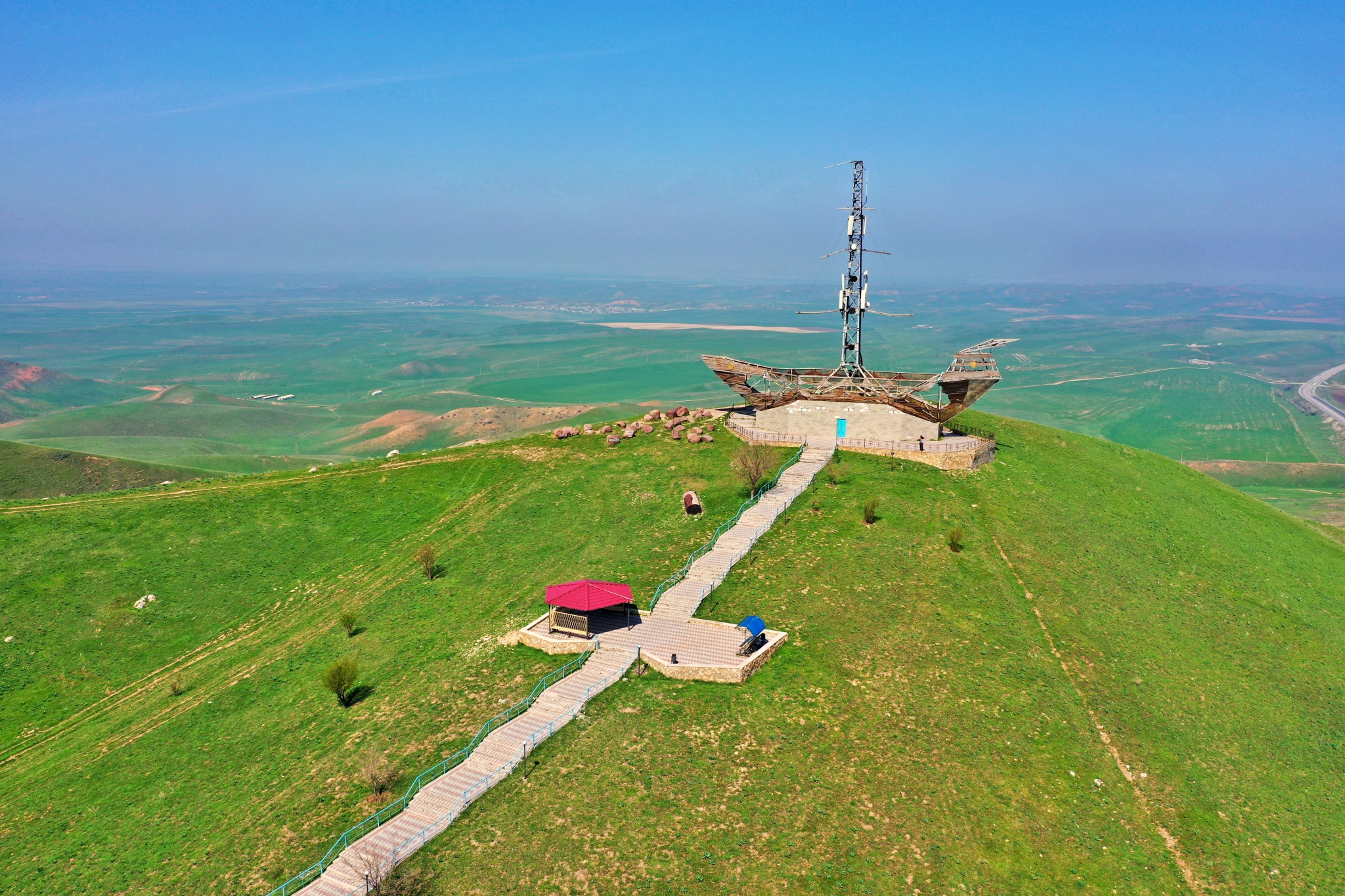3 Months in Central Asia: A tour around Kazygurt to sacred places
Take a tour with us along the Kazygurt mountain to enjoy spring and visit sacred places connected with Noah, Adam & Eve and a contemporary of Sufi Yasawi.
If you are on a hill in Shymkent and look south on a clear day, you will quickly spot a single, broad mountain with two peaks. It is the legendary Kazygurt Mountains.
The mountain represents a natural barrier between the cities of Tashkent and Shymkent (or formerly the city of Sayram) and has fascinated people since early history who traveled between these cities and thus had to overcome this arduous mountain ridge. So it is no surprise that the slopes of this mountain are home to renowned tourist and pilgrimage sites such as the Noah’s Ark monument (also known as Keme Kalgan), Gayip Eren Qyryk Shilten (also known as the Adam & Eve Rock), and the Akbura mausoleum.
Our first stop was at Keme Kalgan, also known as Noah’s Ark monument. This place is easy to reach from Shymkent by car. You just have to follow the Shymkent-Tashkent motorway A-2 (European route E40) . After around 45 kilometers you will see already a ship-like monument on a hill on the right side of the motorway. This is the Keme Kalgan. We stopped our car on a motorway service station at the A-2 just after we passed the hill. From there, steps lead up to the hill, on top of which is the Noah’s Ark monument.

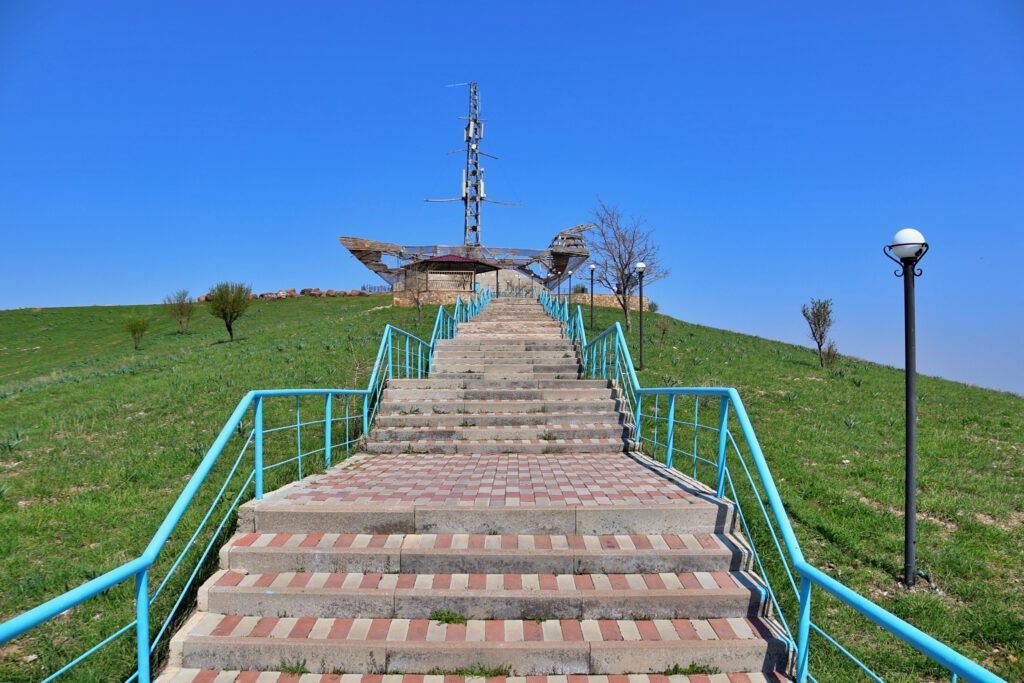

Legend has it that Noah’s Ark came to rest in Kazygurt, hence the name Keme Kalgan, meaning The Ark has stayed in Kazakh language. From a geological point of view, it is clear that the area surrounding Kazygurt is the former seabed of a primeval ocean and the top of the mountain was once an island located in this ocean. However, where the legend of the Ark landing between the peaks of Kazygurt comes from is unknown. As we stood next to the metallic decoration in the shape of a ship symbolizing the Ark, which is basically just a large radio mast in disguise, and looked out over the vast surrounding countryside, the green rolling hills and the two distant peaks of the Kazygurt Mountains, we felt connected to these ancient times and legends. And we believe this is the main reason why a lot of people come here. And you won’t get bored if you come back at different times of the year. Because each season brings a different atmosphere: green landscapes and fresh air in spring, golden hues and bright sunshine in summer.
After visiting the monument, we climbed down the endless steps again and drove on to the Akbura Mausoleum in our rental car.
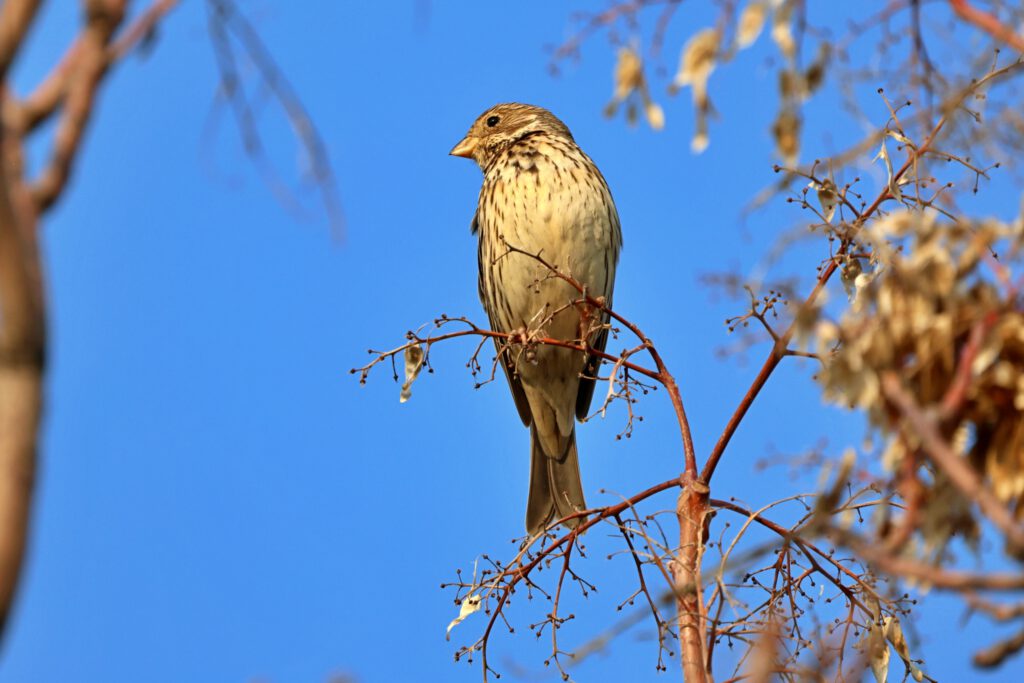

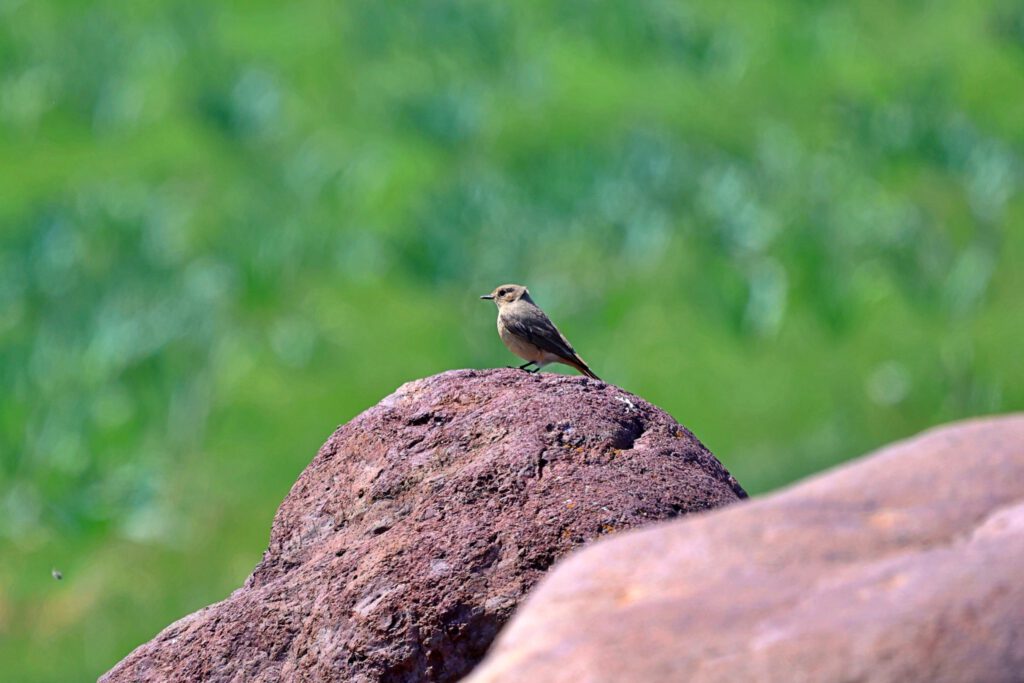
If you want to drive from the Keme Kalgan to the Akbura Mausoleum, it is only about 25 kilometers. You have to leave the A-2 highway and drive through the villages of Rabat and Atbulak. From Atbulak, follow the signs along a small but well-paved road to the mausoleum.
The Akbura mausoleum is considered a sacred place in Kazakhstan, often referred to as Akbura Auliye, meaning Saint Akbura. He was a contemporary of the famous Sufi Hodja Ahmad Yasawi and his real name was Aktamberdy. He was also a Sufi, lived in seclusion at the foot of Mount Kazygurt, treated sick people with herbs and called on people to believe in God. He also owned a beautiful white camel which he liked very much and used for his rides very often. He had a so strong connection to the animal that he received from Yasawi the nickname Akbura. Ak Bura means white male camel in Kazakh. The legend tells that the animal shed bitter tears of grief after the death of Akbura and the tears now form the spring next to mausoleum. In the past, people had the opportunity to swim in the mountain stream, which was fed by the once crystal clear and cold spring water. However, a landslide during a flood has made the stream muddy over time. But very close to the mausoleum, the source of this spring water is still pristine and crystal clear, and people have the opportunity to drink from it.
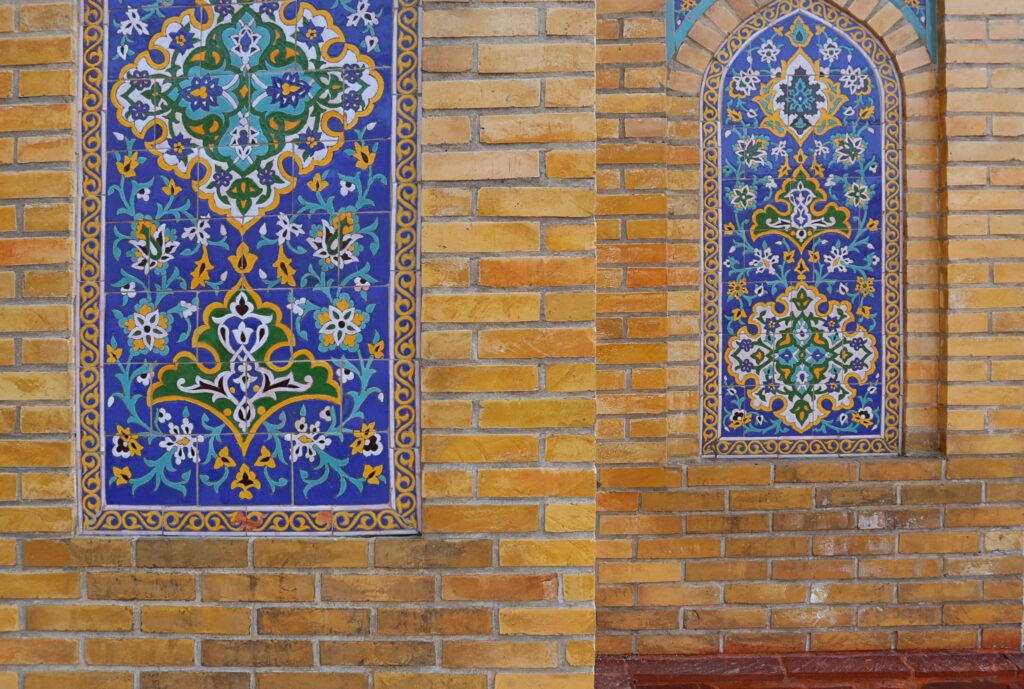


The mausoleum itself is around ten meters long and nine meters wide. A three-meter-high golden dome sits on the six-meter-high roof. The entrance portal at the front is decorated with beautiful ceramic mosaics. The wooden door itself is also a work of art decorated with wood carvings. When the mausoleum was built in 1991, the dome was clad in azure blue ceramic, but a few years ago it was given the golden metal roof to provide better weather protection.
In the moment we visited the mausoleum, it was not crowded, only few visitors were. Actually, every historical and sacred mausoleums are taken care by people who are called in Kazakh Shyrakshy which basically can be translated as Caretakers in English. But we haven’t even seen any shyrakshy there.
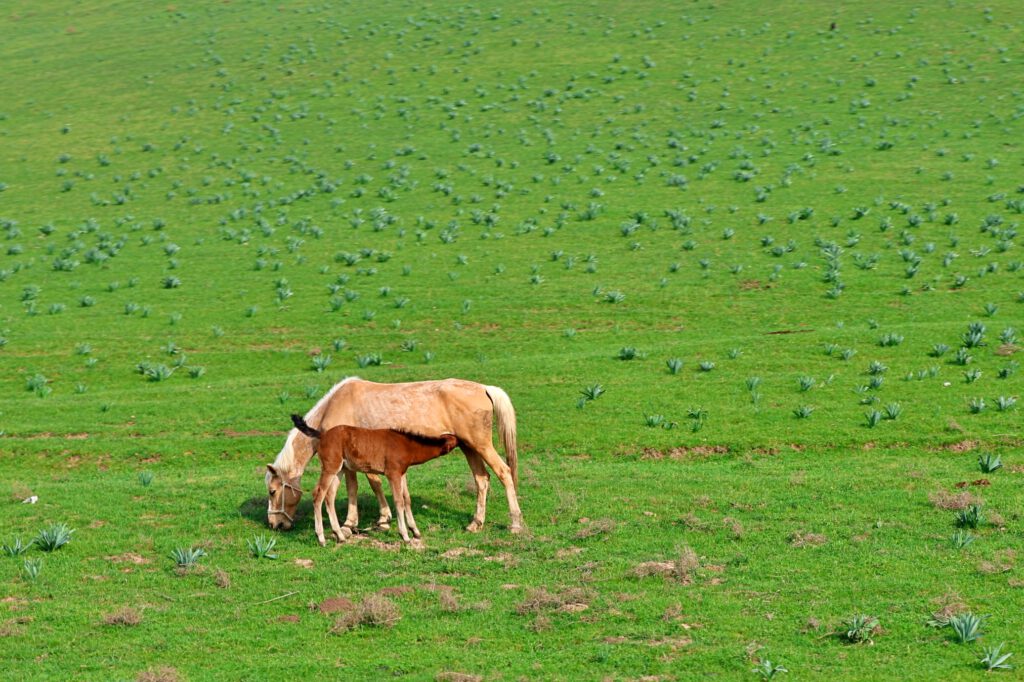
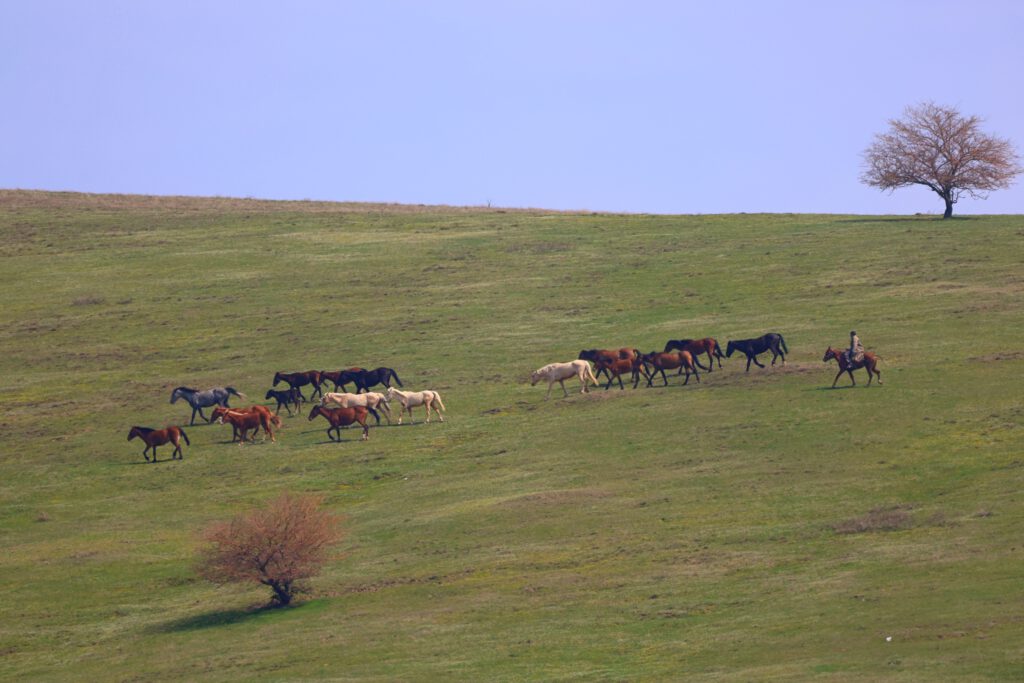
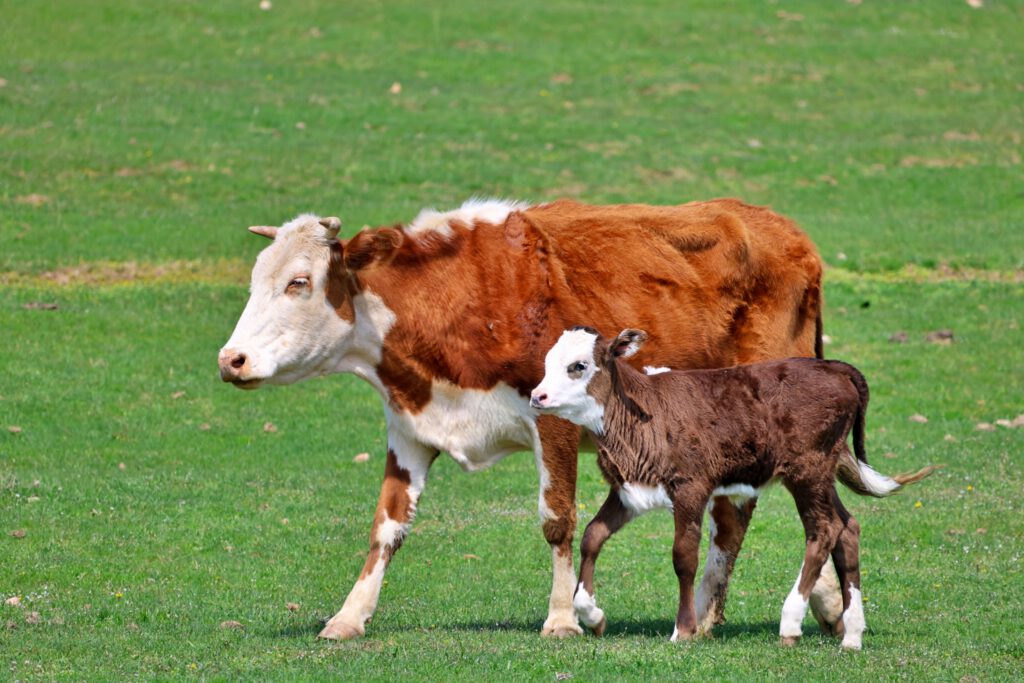
The weather at the Akbura mausoleum was a typically spring weather. Fresh and windy, with the sun providing warmth countered by a chilling breeze. A shepherd with his horse and cow herd was visible in the distance. The mausoleum is located in an aspen grove with a few scattered cherry trees in a narrow valley and is surrounded by mountains and hills from which you have a breathtaking view of the nearby steppe. We walked up an nearby hill, enjoying the serene beauty, the gentle sunshine, and the cold wind. As the golden hour began, trees blooms and tiny flowers on the ground were covered by shadows and strong contrast of the sunlight. This atmosphere, indescribable in words, must be experienced personally. Nearby, Peak Kazygurt stood tall, but we decided against climbing it due to time constraints for our next destination. The hike just up to the hill was fantastic, and we wanted to conclude our trip by visiting Gayip Eren Qyryk Shilten.
The distance between Gayip Eren Kyryk Shilten and the Akbura Mausoleum is about 25 kilometers and we followed the Kazygurt mountain ridge to the east. The views to the left and right of the road were fantastic. The rolling hills with the endless lush green fields, where the tractors of the farmers preparing their fields for the summer looked like toys, looked fabulous against the stone-gray, still snow-capped white peaks of the Kazygurt mountain.
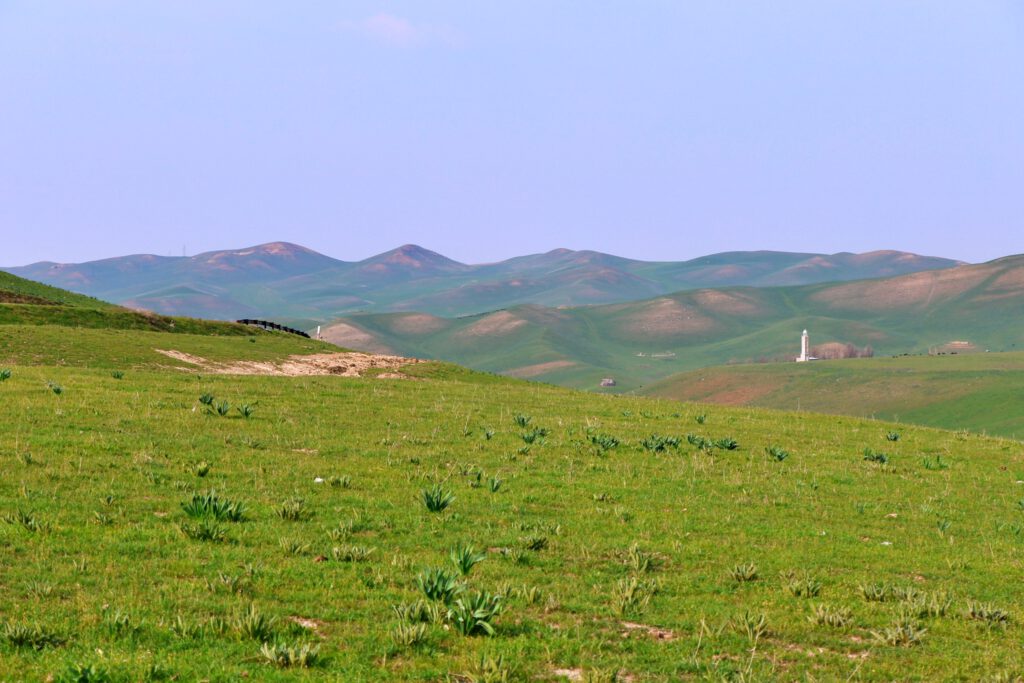
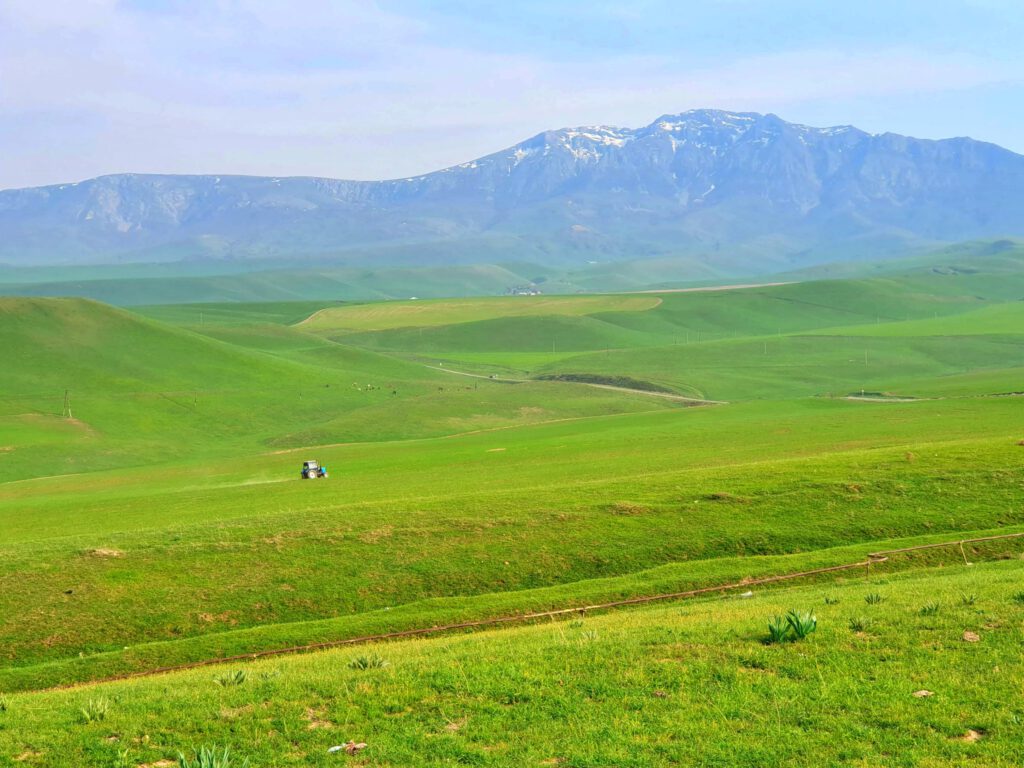
After around 30 minutes drive we arrived Gayip Eren Qyryk Shilten. This site is also known in Russian as the Rock of Adam and Eve. The name refers to a reddish shimmering upright rock exposed from the hill, which has a thin crack running length-ways in the middle. Brave people can squeeze through this crack from one end to the other. It’s great fun for us – so as well for young and old – but not for people who suffer from claustrophobia or are afraid of getting their clothes dirty. The reason for this name referring to Adam & Eve is unknown, but it is also considered as a sacred site with specific rules to follow. Caretakers were present when we arrived, and photography or filming was strictly forbidden, except from a distance. Visitors are only allowed with a guide, free of charge. The caretaker explained that the offical name Gayip Eren Kyryk Shilten means: Gayip – Mystery, Eren – Power/Strength, Qyryk – Forty, and Shilten – Curtain from Kazakh language, reflecting the site’s sacred nature.

Standing there, soaking in the beauty and mystery of these sacred places, was a profound experience. All these locations were easily accessible, well-maintained, and set in beautiful surroundings. The weather was pleasant, making the experience even more enjoyable. These destinations around the Kazygurt mountain, with their rich histories and serene landscapes, are a must-visit for anyone exploring southern Kazakhstan.
Stay tuned for more stories from our three month journey through Central Asia. If you want to support us, follow us on social networks! The story will be continued.



